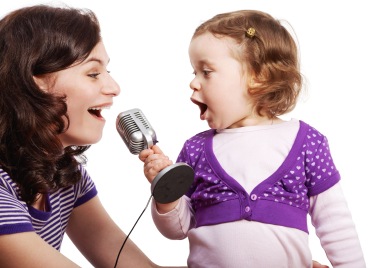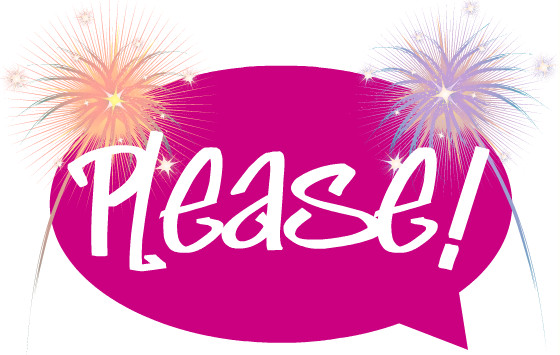Thanks so much for watching my video and heading over to Listen & Learn Music! I’m excited to share “The Toolbox Song” with you because it truly is one of the most effective tools in my musical toolbox (pun totally intended).
My students and clients request this song time and time again, and I am always happy to oblige, because it allows me to work on so many goals at the same time.
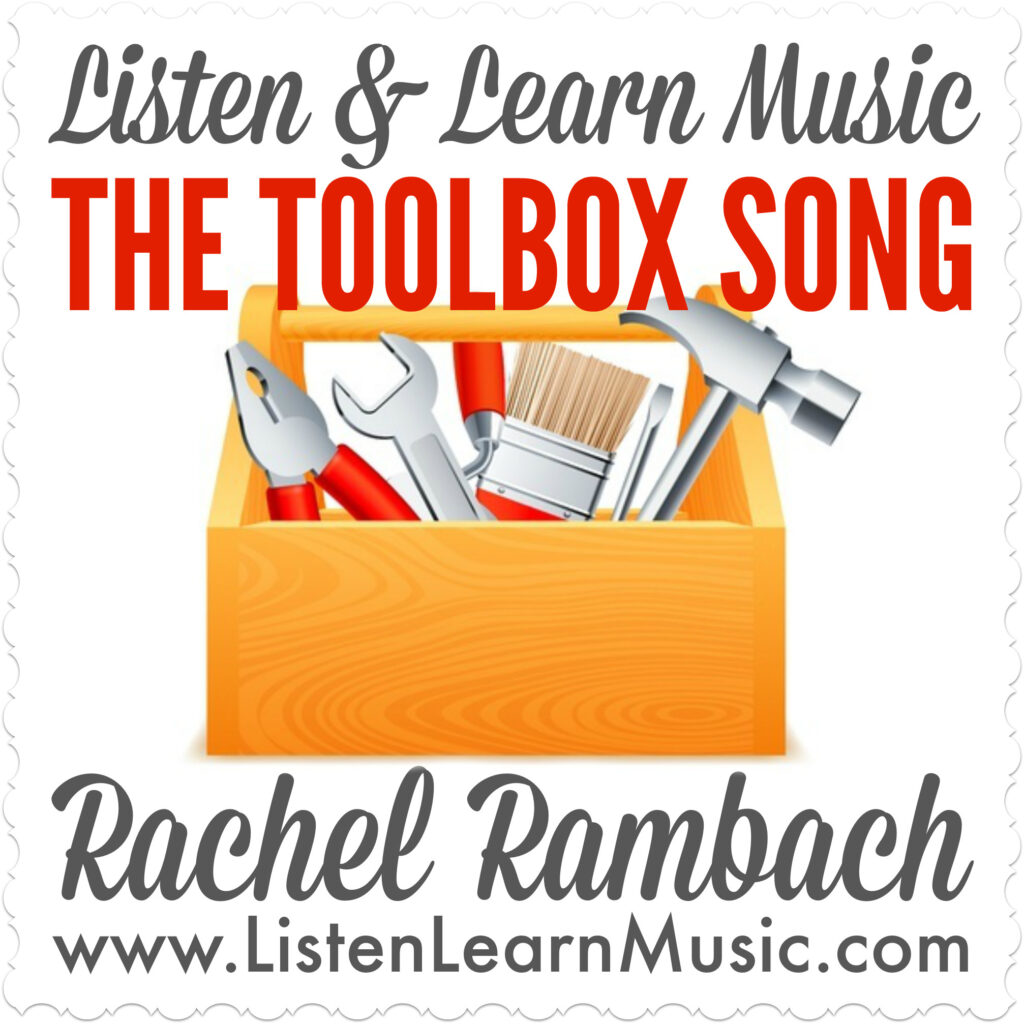
To receive the mp3, instrumental track, lyrics/chords and facilitation guide, simply enter your first name and email address below. Then I’ll deliver the download link to your inbox.
The “La La” Song
Earlier this year, I had the chance to see one of my favorite singer-songwriters, Eilen Jewell, in concert. Pokey LaFarge was the opening act, and I haven’t been able to get his song La La Blues out of my head ever since.
So I used that to my advantage and wrote The “La La” Song! Only my song isn’t about the blues — it’s about being happy, singing, and working towards speech goals.
I used all kinds of consonants throughout the song, but the idea is that they can be changed to accommodate a child’s unique and specific speech goals. I wrote a greeting song a few years back that followed the same model, and was able to adapt it for use with many of my students throughout the years. I’m thinking I can do the same with this one.
Side note: I’m really digging the piano lately! Sometimes it’s refreshing to put down the guitar and use another instrument, not only for recording, but for music therapy sessions as well. I need to do that more often :)
The Magic Word
We all heard it as children, and most likely even say it now: “What’s the magic word?” It’s probably the most frequently used method for reminding a child to say “please” — so I wrote a song about it.
The idea for The Magic Word came to me as I was brainstorming language and social skills topics last week. I was surprised to realize that I hadn’t touched on this particular topic in all my years of songwriting! But now I have, and here is the finished product:
As I was writing the song, I wanted to include specific examples of the “magic word” in use. What I like about the verses is that you can easily replace those examples with your own sentences and questions, targeted to the specific child or group with whom you are working. Or better yet, let them come up with their own!
To check out the entire Listen & Learn song collection, click here. And remember, I’m always up for song topic suggestions, so feel free to share your ideas with me.
Warming Up and Chilling Out

Every year, my husband and I look forward to our April vacation. In years past, we’ve gone to Palm Springs, Hilton Head, San Diego, San Antonio, and this year…Scottsdale (that’s our hotel, the Westin Kierland, pictured above). What do all five of those destinations have in common? They’re all much warmer than where we’re coming from.
Even though it’s April, it’s still not very spring-like in central Illinois. Seriously, temperatures in the 50s and low 60s…ugh. But I can see the light at the end of the tunnel, which is why I’m optimistically posting this song today:
Whether or not it actually starts to warm up here in the Midwest, I’m not worried about the temperatures where we’re headed tomorrow. Hello, 80 degrees and sunshine! Perfect weather for chilling out in the lazy river at our hotel (how cool is that?!) and exploring Scottsdale.
I most definitely won’t be spending much time on the computer while I’m away, but not to worry…I have blog posts ready and waiting to be posted. After all, vacation is no excuse to slack on my 365 in 2011 goal!
Is it warming up yet where you are?
12 Songs Every Music Therapist Should Know
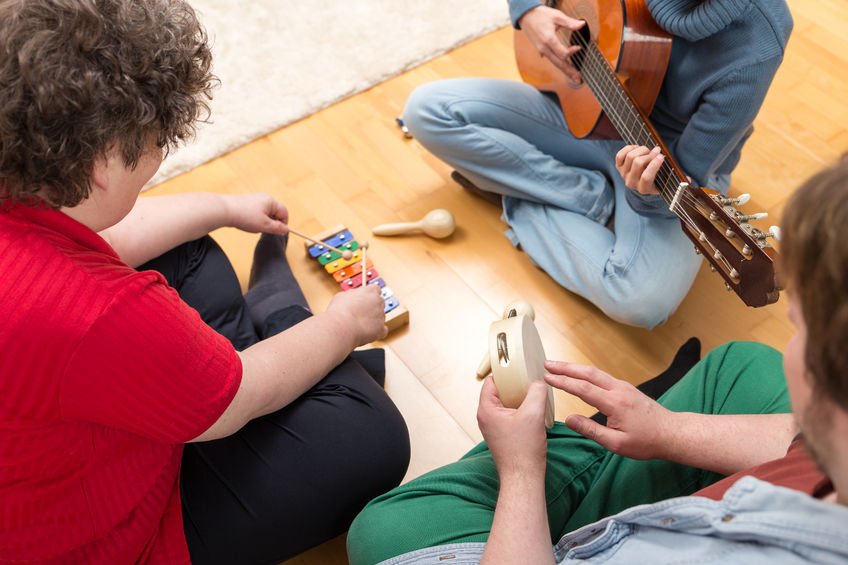
Your list might look different from mine, but based on my experience, here are the 12 songs that I think can be used with just about any music therapy client, regardless of age, diagnosis, or ability.
- “American Pie” – This song is obviously a classic, and I don’t know anyone who doesn’t like singing along to the chorus. It might not be your first pick for a piggybacked children’s goodbye song, but it was mine :)
- “Amazing Grace” – It’s most often associated with seniors and hospice patients, though everyone should have a few hymns in their collection.
- “Blue Suede Shoes” – My students dig this tune, even though most of them have no clue who Elvis Presley is! Older clients, of course, are familiar with both him and the song.
- “Blue Skies” – I use this as a weather song sometimes, or to give everyone a mood lift. It has always been one of my favorite songs.
- “Don’t Worry, Be Happy” – This one is great for discussing positive feelings, and I use it often as the basis of a songwriting activity.
- “The Lion Sleeps Tonight” – Also known as “In the Jungle” or “Wimoweh”, I adapted it for young children and sing the original version on a regular basis.
- “Lean on Me” – It’s all about knowing there are people to support you, and that’s applicable to everyone. Plus, it’s repetitive and easy to sing.
- “Ob-La-Di” – Did you know that this song makes an excellent hello song? I rewrote the words a few years ago, and use it all the time.
- “Somewhere Over the Rainbow” – I think a lot of people have an emotional connection to this song. It’s interesting to hear what’s “over the rainbow” for clients who are verbal and capable of abstract thinking.
- “Take Me Out to the Ballgame” – Baseball is America’s pastime, right? It’s fun to bring out this song every spring and hear about everyone’s favorite teams.
- “This Little Light of Mine” – I learned this song for my internship interview and have been singing it ever since. As a movement song, as an inspirational song, and however else I feel like adapting it on a given day.
- “You Are My Sunshine” – A traditional song that almost everyone knows. It’s easy to adapt for just about any client and setting.
Speaking of songs for music therapists, members of Listen & Learn Plus have instant access to my vast collection of over 200 songs (mp3, lead sheet, and instrumental track), videos, tutorials, and visual aides, plus ALL new releases from Listen & Learn Music. Click here for a free inside look, including several useful downloads!
Mammals In the Water (A Custom Song)
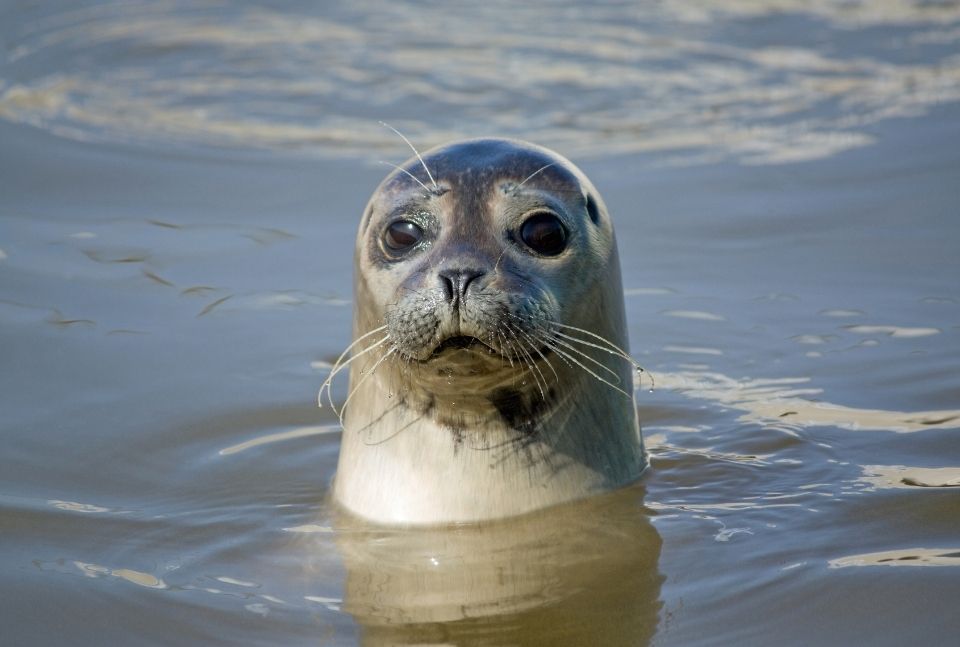
First came The Texas Pledge song, then Help Me, Rhombus, followed by A-Z (What You Mean to Me). My #1 customer when it comes to custom songs is Rene, and she was back this month in need of a song that combined info about water mammals with specific speech sounds. Thus, “Mammals in the Water” came to be.
Rene chose to highlight manatees, narwhals, walruses, and seals in this particular song, and I had a lot of fun doing the research necessary to write the verses about each creature. The rhyming was a little tricky, but both Rene and I are happy with the results…and hopefully her pre-kindergarten students will be, too!
Ooh, mammals – they’re everywhere.
You and I are mammals, we have hair and breathe air.
So are lots of animals you’d find at the zoo,
And even some that live in the water, too!
MAH, MAH, MAH…MANATEES!
They live in the water and they swim so slow,
They’re gray in color and eat plants, you know.
Manatees are gentle even though they’re really big,
With their flippers and their tail and snout (like a pig).
Mah, mah, mah.
CHORUS
NAH, NAH, NAH…NARWHALS!
They travel through the sea; their long tusk leads the way,
They eat fish and shrimp and squid all day.
Narwhals are a special kind of whale,
They swim in groups and their bodies are pale.
Nah, nah, nah.
CHORUS
WAH, WAH, WAH…WALRUSES!
They live in the Arctic, on the ice so cold,
But their blubber on their body keeps them warm, I’m told.
Walruses have whiskers and tusks so long,
Their bodies are brown and huge and strong.
Wah, wah, wah.
CHORUS
SAH, SAH, SAH…SEALS!
They live both on land and in the sea,
And their whiskers help them find lots of fish to eat.
Seals can be black, or gray, or brown,
And they make a funny grunting sound.
Sah, sah, sah.
Ooh, mammals – they’re everywhere.
Just like us, these animals have hair and breathe air.
But they don’t live in a house or at the zoo,
Mammals live in the water, too!
The Rhythm Sticks Waltz
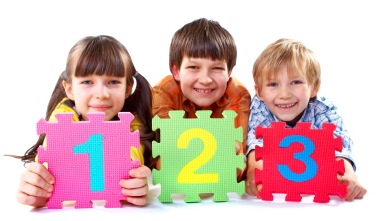
Every time I use this song in a class or music therapy session, I start by having my students count to 3. We do it once to begin with, very slowly, and use our fingers as well as our voices. Gradually we get faster, counting to 3 again and again in rhythm. Then I explain that they’ve just counted a type of song called a waltz.
Rhythm sticks are a great instrument for this type of activity, because the beat can be heard very clearly. Younger students seem to have better impulse control while playing sticks as opposed to drums or other types of percussion instruments, though I may experiment a little.
This is a relatively new song, but so far I’ve had lots of fun and success with it. The concept of counting to 3 over and over again is a bit difficult at first, but once my students can do that, they have laid the foundation for some pretty important music (and non-music) skills.
If you can count to three (1, 2, 3)
Then you can do the rhythm sticks waltz with me.
Just click your sticks and feel the beat,
The rhythm stick waltz is so sweet.
1-2-3, 1-2-3, 1-2-3, go,
Keep tapping, don’t stop yet,
Just feel the flow.
If you can count to three (1, 2, 3)
Then you can do the rhythm sticks waltz with me.
Just click your sticks and feel the beat,
The rhythm stick waltz is so sweet.
1-2-3, 1-2-3, 1-2-3, pause,
And take a rest,
Let’s hear the applause!
Of course, when I use this song in a live session or class, we make our own applause :) We also vary the tempo, going very slowly at first and then seeing how quickly we can play and sing while keeping the steady beat.
I don’t write many songs in 3/4 time, especially not songs meant to be played along to with instruments. But it’s good to have a few in the mix. Which waltz-tempo songs do you sing and play with your students?
Turn the Beat Around
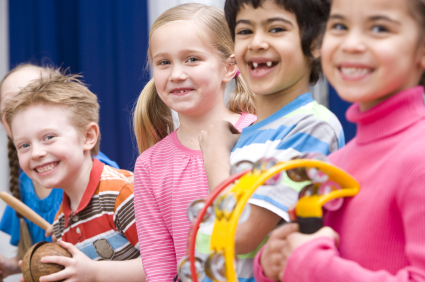
Why yes, I am referring to that old song made famous by Gloria Estefan in the 90s. I used to love it way back in the day, especially trying to sing along with the crazy fast syllable-full verses.
While I was brainstorming new instrument songs last week, this one just popped into my head and refused to leave. But it turned out to be a good thing, because I ended up tailoring the lyrics just enough to make it the perfect rhythm sticks song.
I predicted that when I played it with my Church Mice on Sunday, the parents would get a kick out of it…and I was right. Most of them knew the song and were singing along with me right away.
Turn it up, turn it up, turn it up so loud!
Turn it up, turn it up, turn it up so loud!
Turn the beat around,
Love to hear the percussion.
Turn it upside down,
Love to hear the percussion.
Love to hear it.
Oh, you sure sound pretty,
Your rhythm keeps movin’ to the nitty gritty
When you hear the tap of the wood a-tappin’
Then you’ll know that rhythm carries all the action,
Woah, yeah!
Turn the beat around,
Love to hear the percussion.
Turn it upside down,
Love to hear the percussion.
Love to hear it.
Turn it up, turn it up, turn it up so loud!
Turn it up, turn it up, turn it up so loud!
Turn it down, turn it down, turn it down so soft…
Turn it down, turn it down, turn it down so soft…
Turn the beat around!
I had a lot of fun with this recording, in case you can’t tell by listening to it. I’m thinking about tweaking the lyrics to make it a drumming activity for my students. And that’s the best thing about this song — it could be used with or without any instrument, not just rhythm sticks. Even keeping the original lyrics would work, because they’re all about music.
How would you use it? Or maybe you wouldn’t at all. It didn’t cross my mind as a good song for kids until just recently, but I’m sure glad it did! Except for the part where it is permanently stuck in my head, that is ;)
Free “Feelings” Visual Aide Download
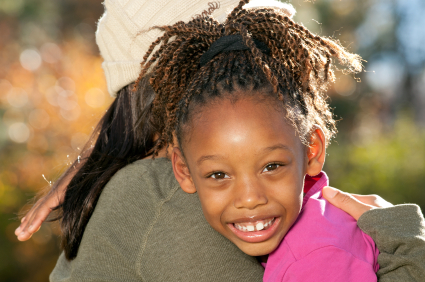
I love to sing The Feelings in My Heart around this time of year, what with so much talk about Valentine’s Day, hearts, and love. This is one of my favorite Listen & Learn songs — it’s even featured on my studio album.
And that leads me to the highlight of this post: a visual aide download to go along with the song. I like to give my students an example of each emotion as it is mentioned in the song, and while in the past I’ve used illustrations, this year I wanted to use stock pictures of real children to which they could better relate.
Visual Aide Download: The Feelings in My Heart
As described in the PDF download above, I laminated the pictures, cut them out, and single-hole punched them so that I could keep them together with a binder ring. They were a hit when I used them for the first time yesterday afternoon with a group of young music therapy students. We used sign language for each emotion as we looked at the pictures during the song — talk about a multi-sensory experience!
Here’s the full song and lyrics, as well as the instrumental version. I hope you can make use of this visual aide (and if so, please let me know in the comments how you plan to do so).
Speech Therapy + Music Therapy = <3
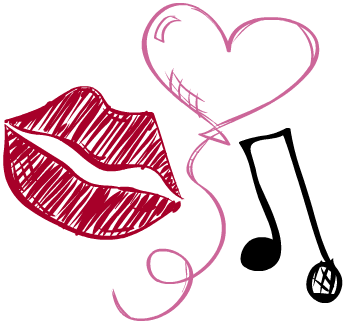
That’s the emoticon version of a heart, in case you were wondering. Valentine’s Day is a week away, so this is the perfect time to talk about what a great pair speech therapy and music therapy make.
I love collaborating with the speech therapist at my school, so much so that I recently gave a presentation about music therapy for communication goals to her speech and language pathology association. The children with whom we work respond to music above everything else, so incorporating music into speech interventions makes them even more effective.
This month, speech and language goals for our students are centered around the theme of friendship, and target words include I, you, friend, heart, and the colors pink, red, and white. Our speech therapist put together some simple song ideas, and my job was the add the music.
I am your friend,
You are my friend,
We are all friends together.
Everywhere we go,
At work and at play,
We are all friends together.
I’m going to the store to buy candy hearts,
To buy candy hearts,
To buy candy hearts.
I’m going to the store to buy candy hearts,
To give to my friend on Valentine’s Day.
Some of the hearts are pink or red or white,
Pink or red or white,
Pink or red or white.
Some of the hearts are pink or red or white,
All for my friend on Valentine’s Day.
Both the speech therapist and I include these songs in our sessions so that the students are exposed to these concepts frequently throughout the month. Collaboration is key in the classroom setting…plus I love being part of a team. How do you collaborate with other professionals to enhance students’ progress?
Jumping for Joy
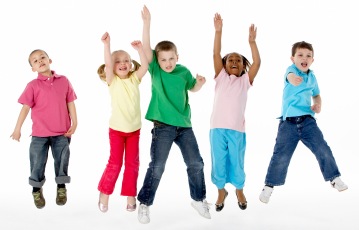
Sometimes I wonder if I’m really making a difference. That question ran through my head just last night, in the middle of a music therapy session. I’ve been working with this particular child since she was 4 months old; she’ll turn 4 years old in May. She’s making big strides, but how much of that progress can be attributed to music therapy?
Towards the end of the session, I decided that we needed to get up and move a little. I could see that she had energy to burn, and I wanted her to use it productively. So I sang the following song, which I adapted from the wonderful Cathy Bollinger:
I’ve got a wiggle wiggle wiggle in my feet
And I wiggle wiggle wiggle to the beat
I’ve got a wiggle in my toes, a wiggle in my knees
And when the music stops everyone freeze!
I’ve got a march march march in my feet
And I march march march to the beat
I’ve got a march in my toes, a march in my knees
And when the music stops everyone freeze!
I’ve got a jump jump jump in my feet
And I jump jump jump to the beat
I’ve got a jump in my toes, a jump in my knees
And when the music stops everyone freeze!
I’ve got a tiptoe tiptoe in my feet
And I tiptoe tiptoe to the beat
I’ve got a tiptoe in my toes, a tiptoe in my knees
And when the music stops everyone freeze!
I’ve got a tap tap tap in my feet
and I tap tap tap to the beat
I’ve got a tap in my toes, a tap in my knees
And when the music stops everyone freeze!
I’ve got a hop hop hop in my feet
And I hop hop hop to the beat
I’ve got a hop in my toes, a hop in my knees
And when the music stops everyone freeze!
My student’s big sister was participating in the session, so both girls danced, jumped and marched (and played the nearby tubano drum, which wasn’t part of the song but added a nice beat!) while I sang and modeled the movement.
After the song ended, my student motioned for her mom to bring my music stand over to our rug. (For some reason, my little ones really enjoy standing in front of it while they sing.) As I strummed my guitar and sang the goodbye song, she sang right along with me, pronouncing the words as best as she could.
After she had taken “goodbye” off of the schedule and chased after her sister into the hallway, her mom turned to me — and that’s when I realized she had tears in her eyes.
She told me that today was the first time she’d ever seen her daughter jump, which surprised me immensely, considering she’d made it look so effortless. She also told me that the way she sang the goodbye song was leaps and bounds above her usual level of word pronunciation, not to mention the length of time for which she sang. And then she told me that it was all because of music therapy.
So much for those doubtful thoughts I’d been experiencing just minutes earlier. If my next student hadn’t already been waiting for me in the next room, I might have run outside and jumped for joy myself!

